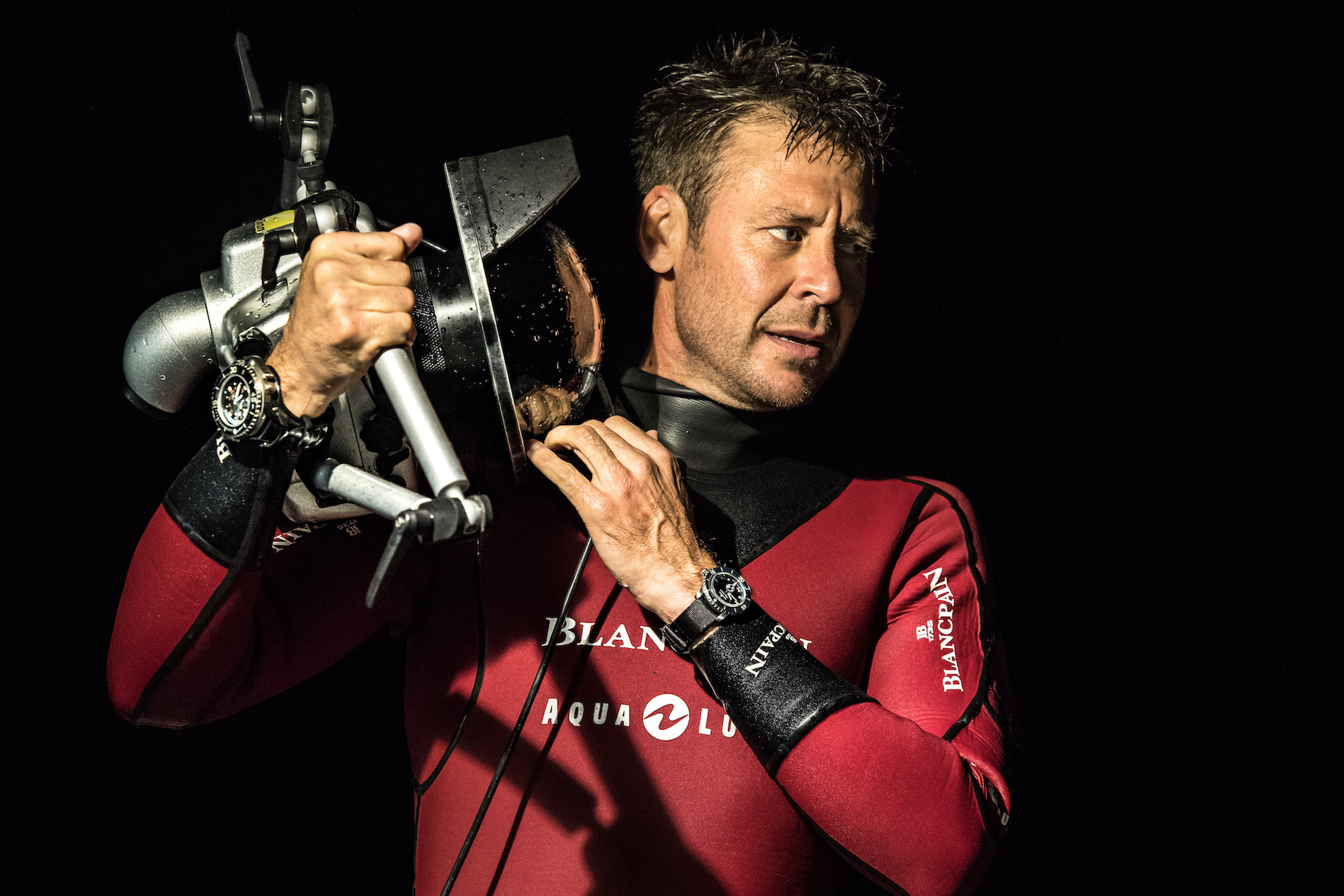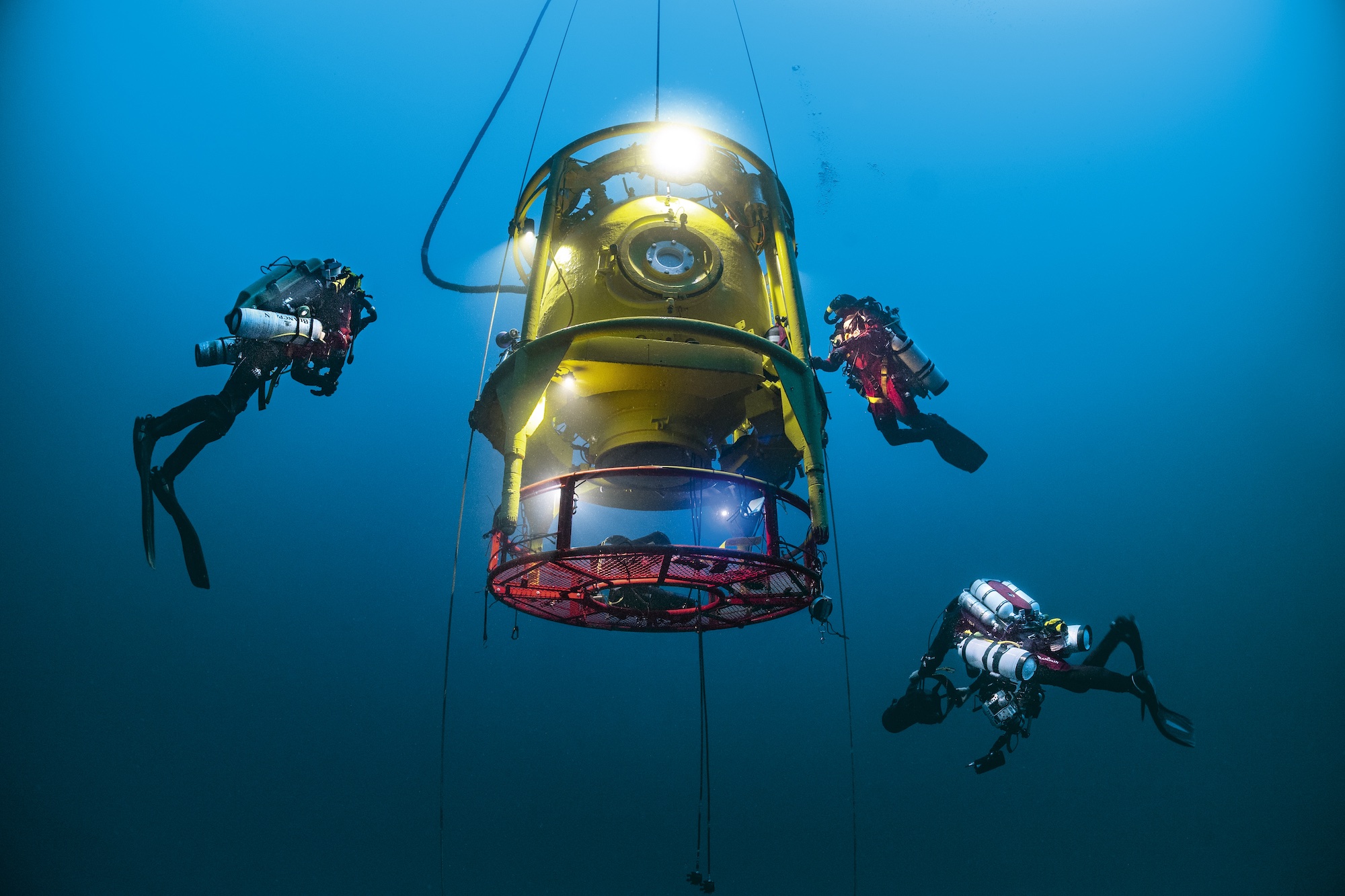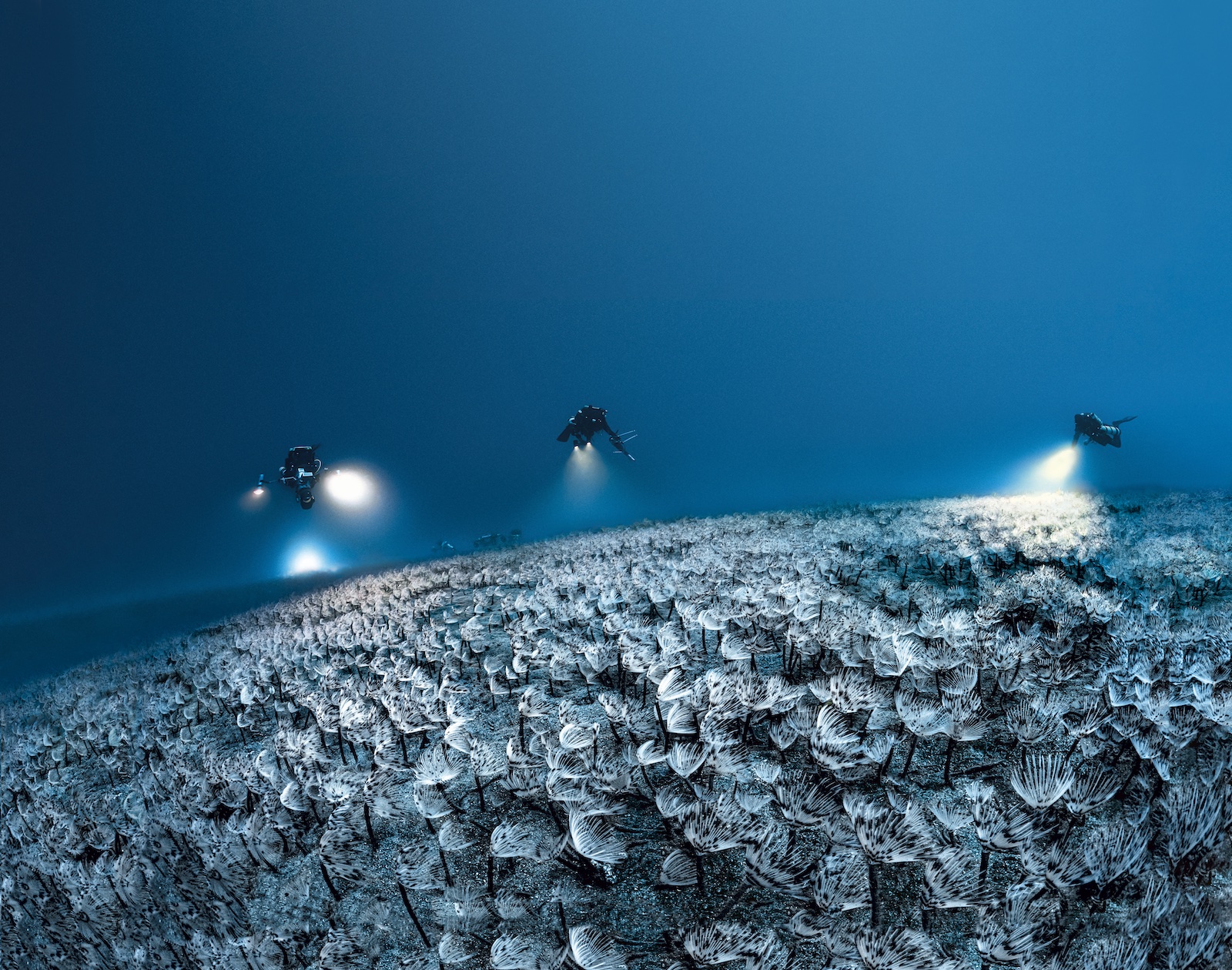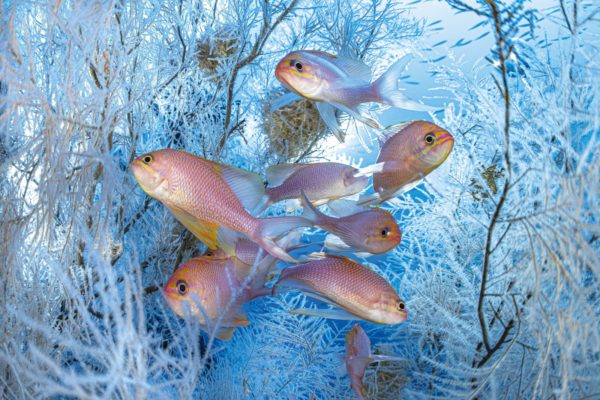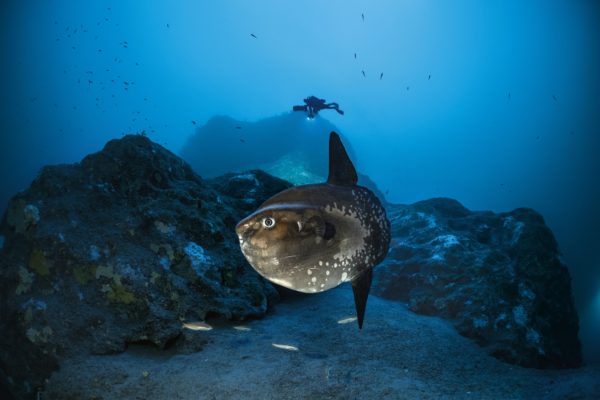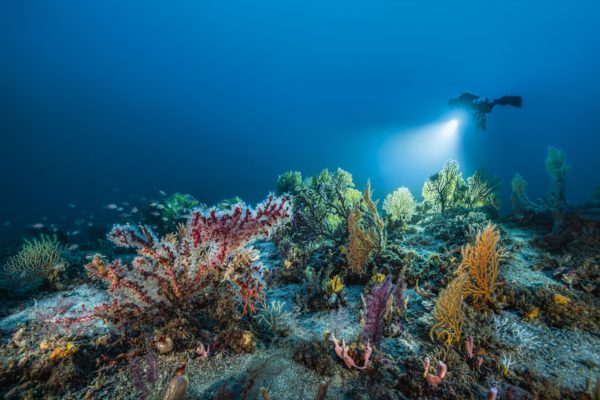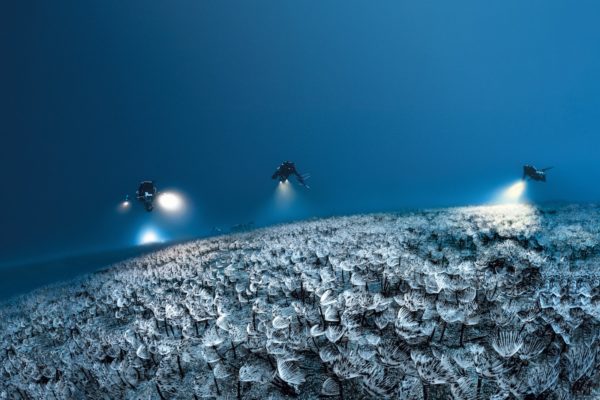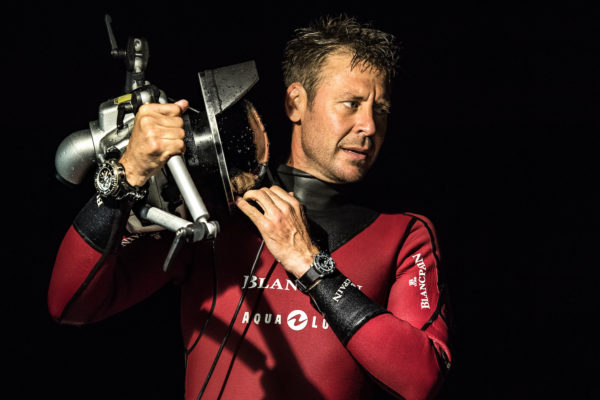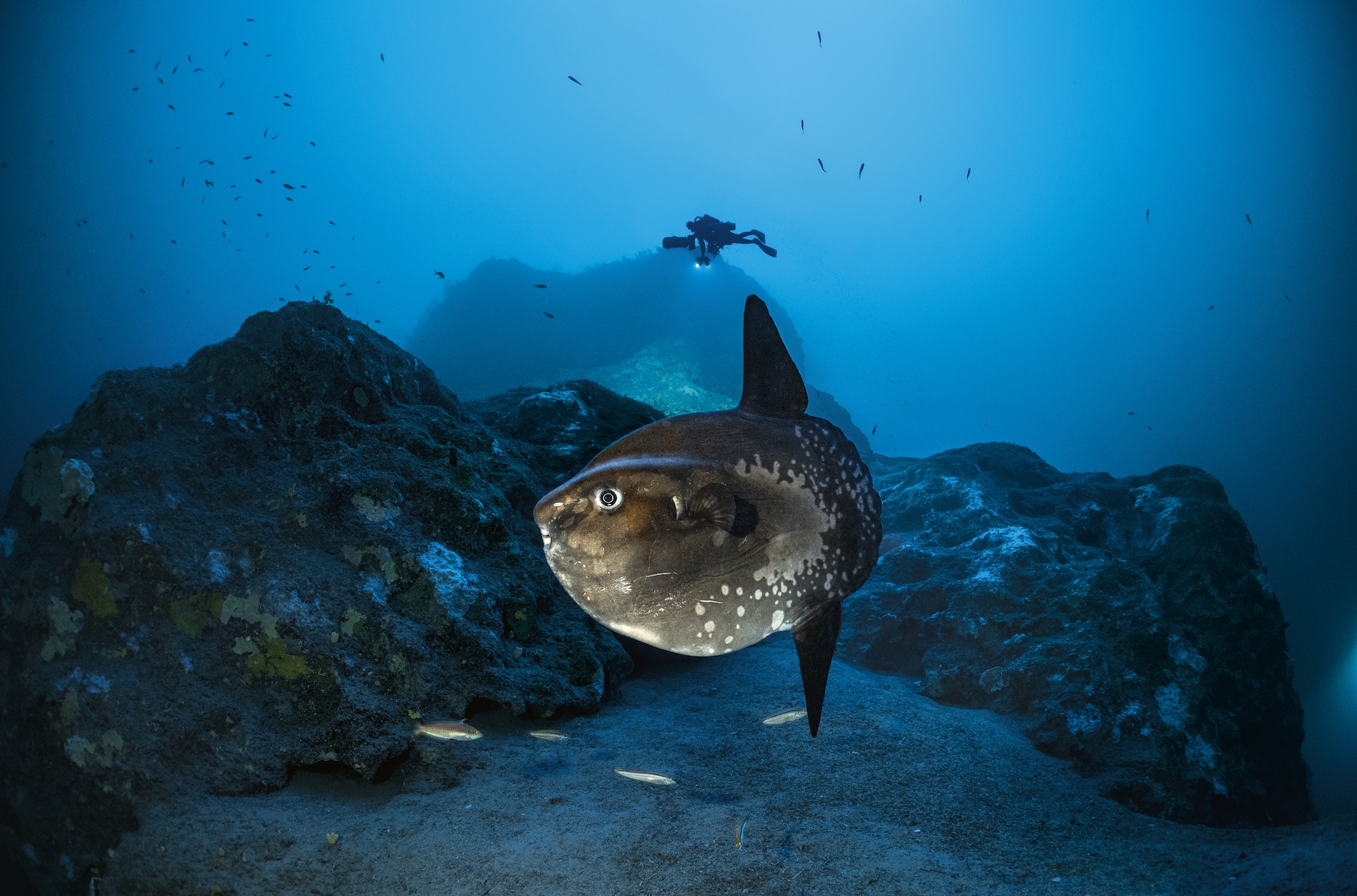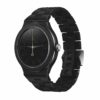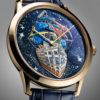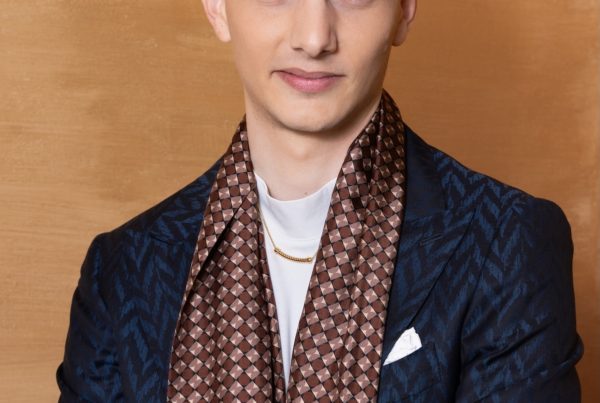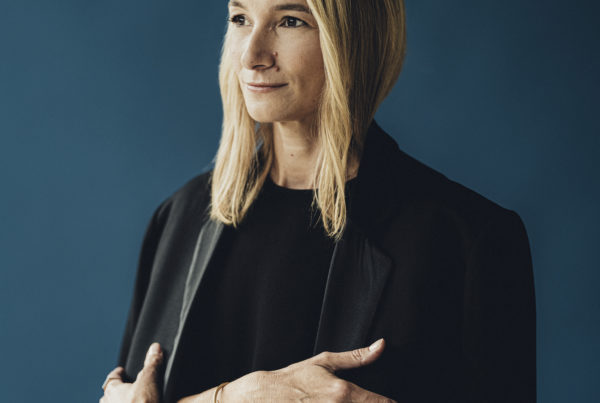« “What fascinates me are the mysteries of the underwater world”
Laurent Ballesta is an outstanding diver, biologist and photographer of the deep sea. In 2013, he set up the Gombessa Expeditions to study the rarest creatures and phenomena of the deep. A film about the mystery of the coralligenous rings off Cap Corse should be released this year. Interview with Isabelle Cerboneschi
His images are overwhelmingly beautiful, although beauty is not the aim of scientist, diver and photographer Laurent Ballesta. He extracts beauty from the depths of the sea in spite of himself. His aim is to inspire people to protect the planet and its richness at all costs. He has compiled his photographs in a book that is a must-have in your library. In it, we discover the mysteries of what we don’t know, what we don’t understand, and yet what fascinates us. It goes beyond aesthetics. By diving to great depths, he offers us a glimpse into unknown territory.
The Blancpain Ocean Commitment – the initiatives through which the watch brand works to protect the seas – includes a partnership with Laurent Ballesta. Blancpain has been supporting his Gombessa Expeditions since its very first mission in 2013. The aim of this project is to study the rarest and most elusive marine creatures and phenomena on the planet. This is how Laurent Ballesta came across a coelacanth, the oldest fish in the world, a mythical underwater animal that was thought to have disappeared until the 1930s.
INTERVIEW
How did your passion for diving come about?
Laurent Ballesta : I don’t remember it ever coming. It’s always been there. It wasn’t the sea itself that attracted me, but images of the sea. I used to watch Commandant Cousteau’s films. There was nothing original about that: millions of us around the world were fascinated by his adventures. He had the great idea of not only depicting marine animals but also the men who dived. It was very easy to see a vocation being born. That’s where it came from, when I was very young. We lived near Montpellier, ten minutes from the sea, and my parents were beach lovers. It would be a lie to say that they went to the sea because they didn’t swim. Or just when they were very hot. In any case, they could barely swim. Whenever they had a free day, it was a towel on the beach. When you’re a child in those conditions, you’re doomed either to be bored or to go and play in the sea. But when you’ve seen Cousteau’s films, you play Cousteau. At 49, I’m still playing Cousteau.
And what made you want to make underwater images?
As a child, I was drawn to draw, paint and sculpt. There was only one step from illustration to photography. When I was lucky enough to have a camera in my hands, all that past, all that childhood found a space to express itself. Of course it wasn’t conscious: when you’re young you don’t say: “I want to express myself”. I started taking underwater photos when I was an adolescent: I wanted to prolong the contemplation. Diving is short: you’re not meant to go under the sea. Once you scuba dive, it’s magical, but it’s not magical for very long. After half an hour or forty minutes, it’s over. If you’re passionate about mushrooms or birds, you can spend days looking at them. Photography gave me that opportunity. I’ve always been a bit of a collector and I said to myself that I was going to collect all the fish in pictures. And when I’d finished, I’d do all the shells, then all the crustaceans… It was a fairly naive vision.
Your photos go far beyond a collection of species.
When I started taking photos, beyond what I saw, I wanted to show what I felt. Today, what I want to reveal in my images is all the mystery behind them. People often tend to take a shortcut and say to me: “You want to show the beauty of the seabed”. But no! I don’t care about the beauty. What fascinates me are the mysteries of the seas. If we draw an analogy with humans, when you pass a super-handsome guy or a sexy girl in the street, you get a ‘wow’ effect, but it’s fleeting. On the other hand, a person who looks mysterious, who hides a bit and has a thrifty way with words, you feel that you could perhaps fall in love with them. Underwater, it’s the same thing. What really fascinates me is not the beauty of certain creatures but the mysteries they conceal. We’re lucky in that the underwater world is sufficiently impenetrable and inaccessible that the mystery remains and gives meaning to an entire existence, at least mine, and makes me want to try and get close to them.
What’s the biggest mystery you’ve ever come across on the seabed?
Mysterious formations were discovered off Cap Corse around fifteen years ago. They are rings of coralligenous drawn in a perfectly circular shape at a depth of 120 metres. They are 20 metres in diameter. There are more than 1,400 of them and no one has understood their origin or why they are there and not elsewhere. For four years now, my friends and I have been working with internationally renowned researchers, geophysicists, palaeo-climatologists and other highly specialised scientists, to unravel the mystery of the rings at Cap Corse. After a four-year mission, we’re starting to edit the film that will tell the whole story.
Did you find an explanation?
Yes. There are still a few points of obscurity, but overall we’re going to retrace the history of these rings over a very long period. But I’m not going to reveal the secret just yet: we’ll have to wait for the film, which should be out this autumn.
What was the encounter that most moved you or changed your perception of the world?
The one with the coelacanth. It triggered off so many things! In the history of zoology, this animal is mythical, so to be able to say that you belong to that history, that you are part of the line of researchers who have devoted their lives to this animal, is a source of pride. I was able to get close to it in its world, to observe it at close quarters: It was a decisive moment.
But people thought it had disappeared.
Yes, until 1938. That year, a fish that appeared in a net was identified as a coelacanth. At first nobody believed it: they thought it was a hoax. It wasn’t until another fourteen years later, in 1952, that we realised it really existed. Coelacanths live in the Mozambique Channel, in the depths of the Comoros Islands. At the time, seeing a coelacanth was as implausible as seeing Jurassic Park. There were palaeontologists who had studied fossils of this fish all their lives and suddenly they were told that they existed for real! Unlike Jurassic Park, you have to go and find them at great depths: in the Comoros, you have to go down to 200 metres. They are very rare and fragile. When you try to capture them, they die. Even if we discover that they are still alive, they give up their secrets in dribs and drabs. When the object of our desire becomes so rare, it generates even more passion. We got into the game in 2009. We were the first to photograph it in its natural environment, by scuba diving. That’s when Blancpain entered the race.
Had you offered partnerships to brands other than Blancpain before?
Yes, but I’d had a few setbacks. When I finally had an appointment with Marc A. Hayek, I said to myself that this was the last time I’d try. I’d had enough. But I didn’t even have to be persuasive. I had in front of me someone who was surprisingly receptive. He had so many questions for me that he wouldn’t even let me tell him about the project I’d come to present (laughs). He wanted to know what camera I was using to take my photos, what diving suit I was using, how I was decompressing – he had a thousand questions. We started this partnership ten years ago.
When you dive, you set off with a dive computer that provides you with an enormous amount of vital information, but in the event of a breakdown, could a dive watch like the Fifty Fathoms be enough to save your life?
Of course it could! A diver who knows his job just needs a sense of time to get by. You can estimate depth fairly well, but time is more complicated. You can pretty much get out of any situation if you have a stopwatch that works properly. It’s a very good back-up, admittedly a luxury, but don’t these dives deserve it? The time spent with the mythical coelacanth is worth being measured with a quality instrument! (he laughs).
Many species disappear every day, but many more are discovered. What would be your Holy Grail: what do you hope to discover one day?
Lots of things! My dream would be to witness the predation of the giant squid. To see this animal, which can be ten metres long, with its gigantic tentacles, hunting. You’re entitled to dream. It probably happens at inaccessible depths. Or why not witness the coelacanth mating. It mates even though it has no external genital organs. It must be a belly-to-belly dance, perfectly stuck together, so that the semen can pass into the female. No one has ever seen anything like it. I could make lists and lists of things, but that would depress me, because I know that a lifetime won’t be enough…

